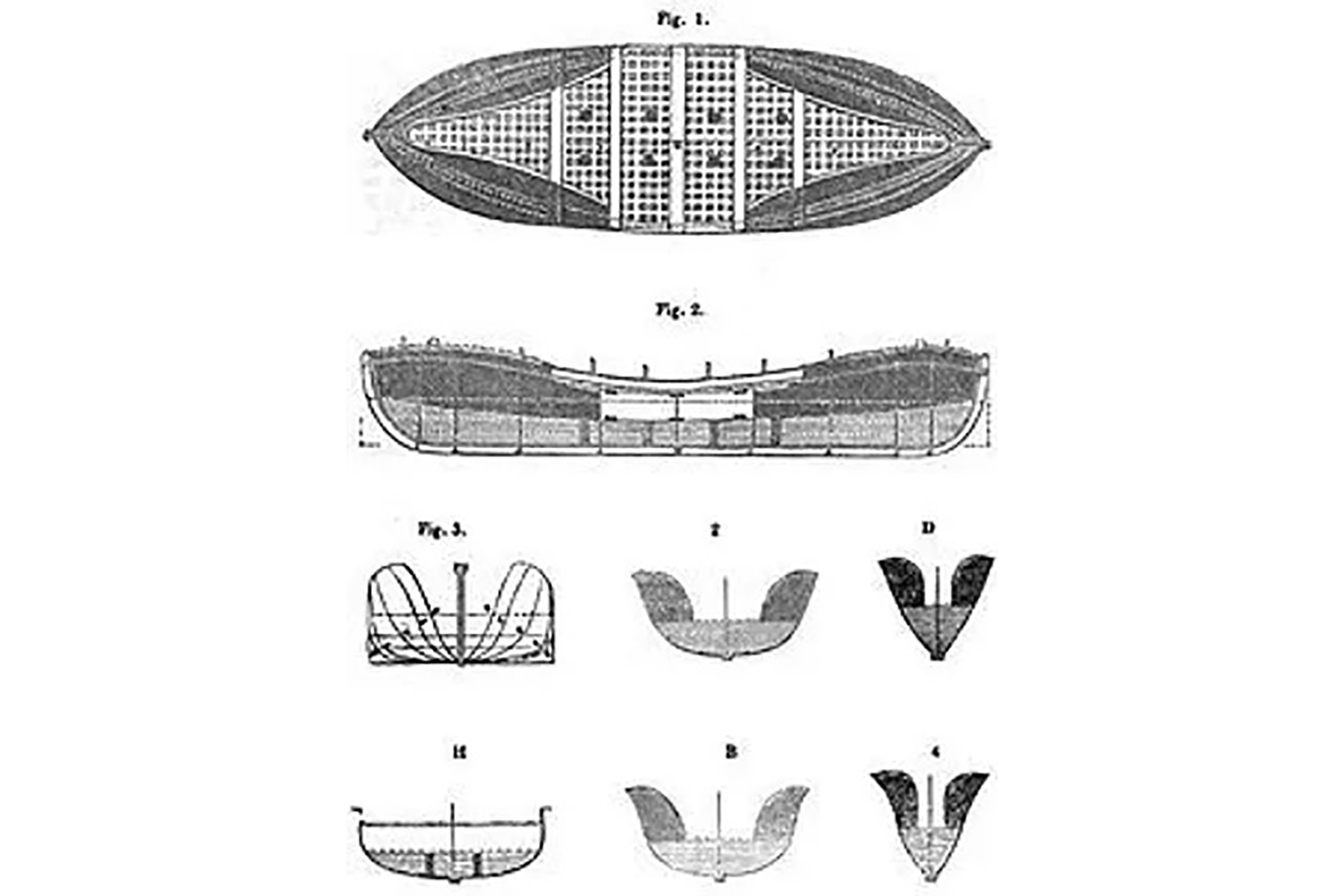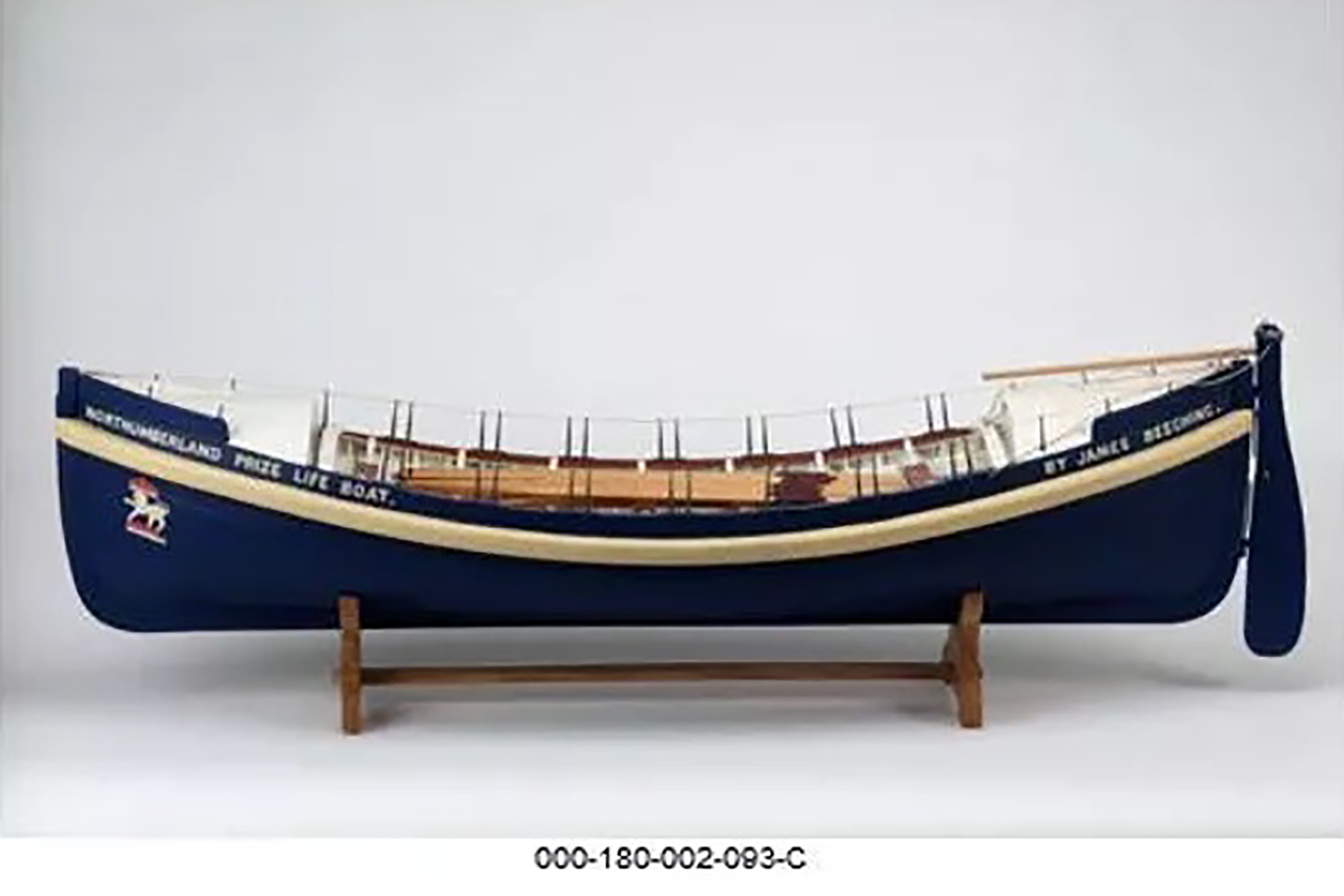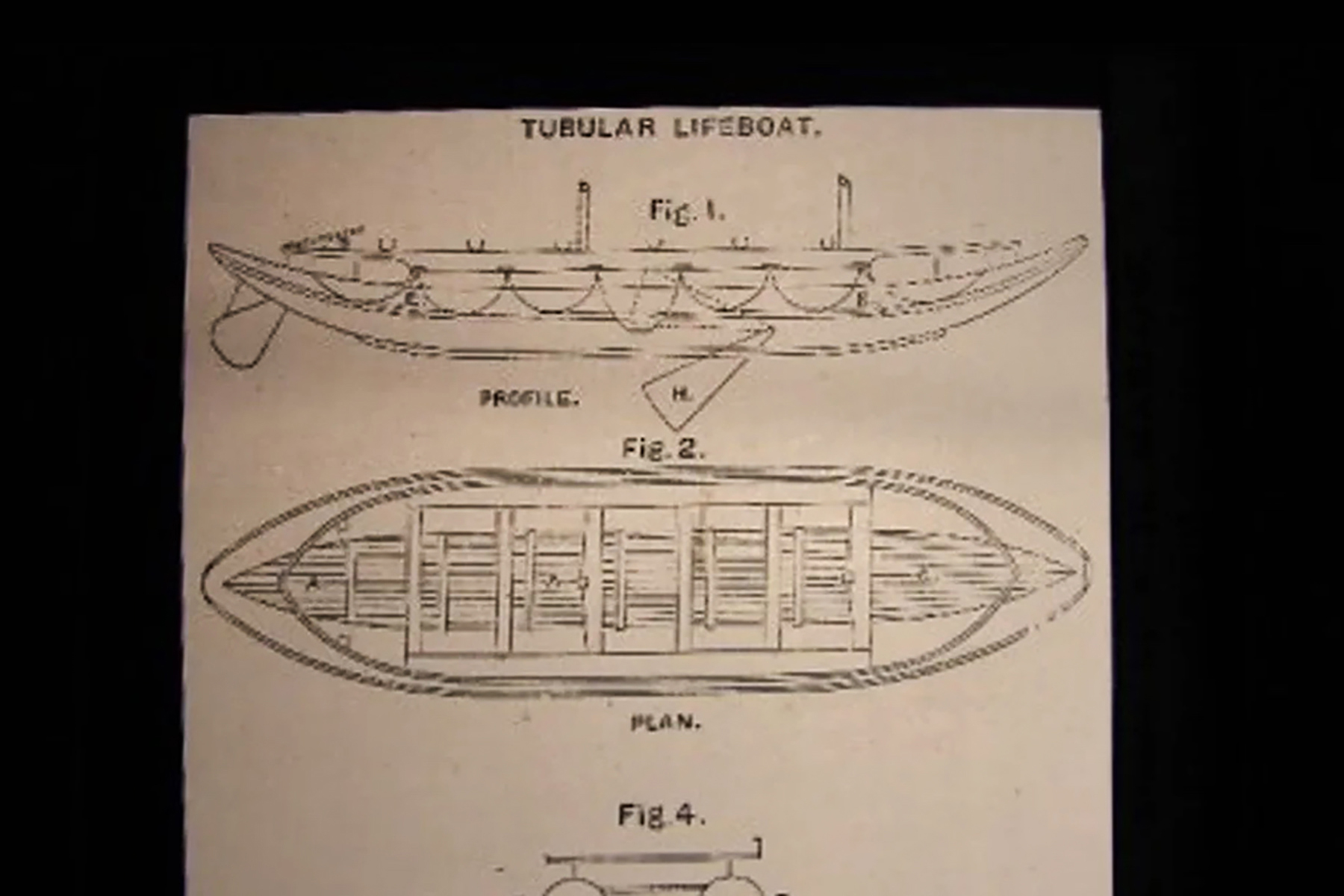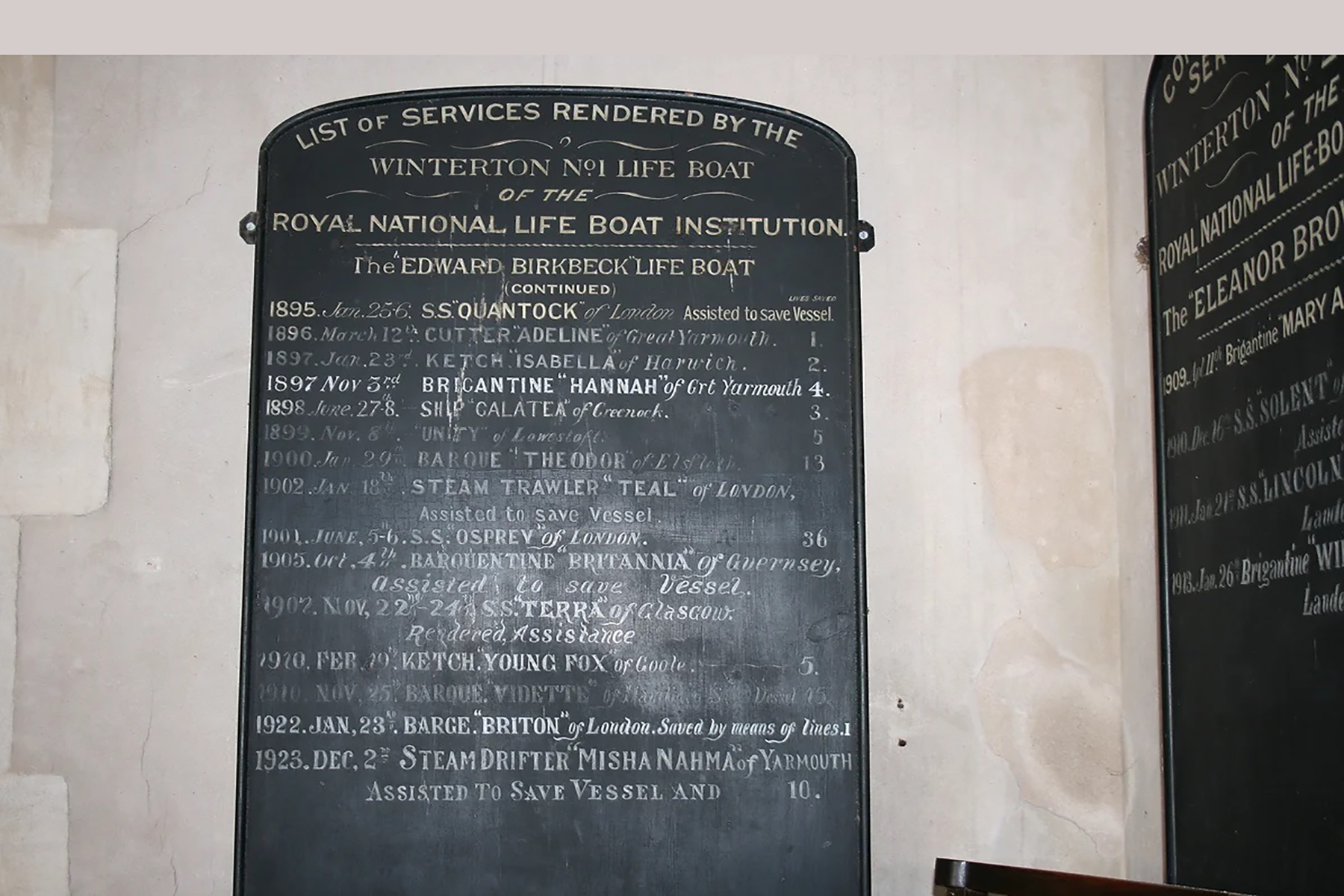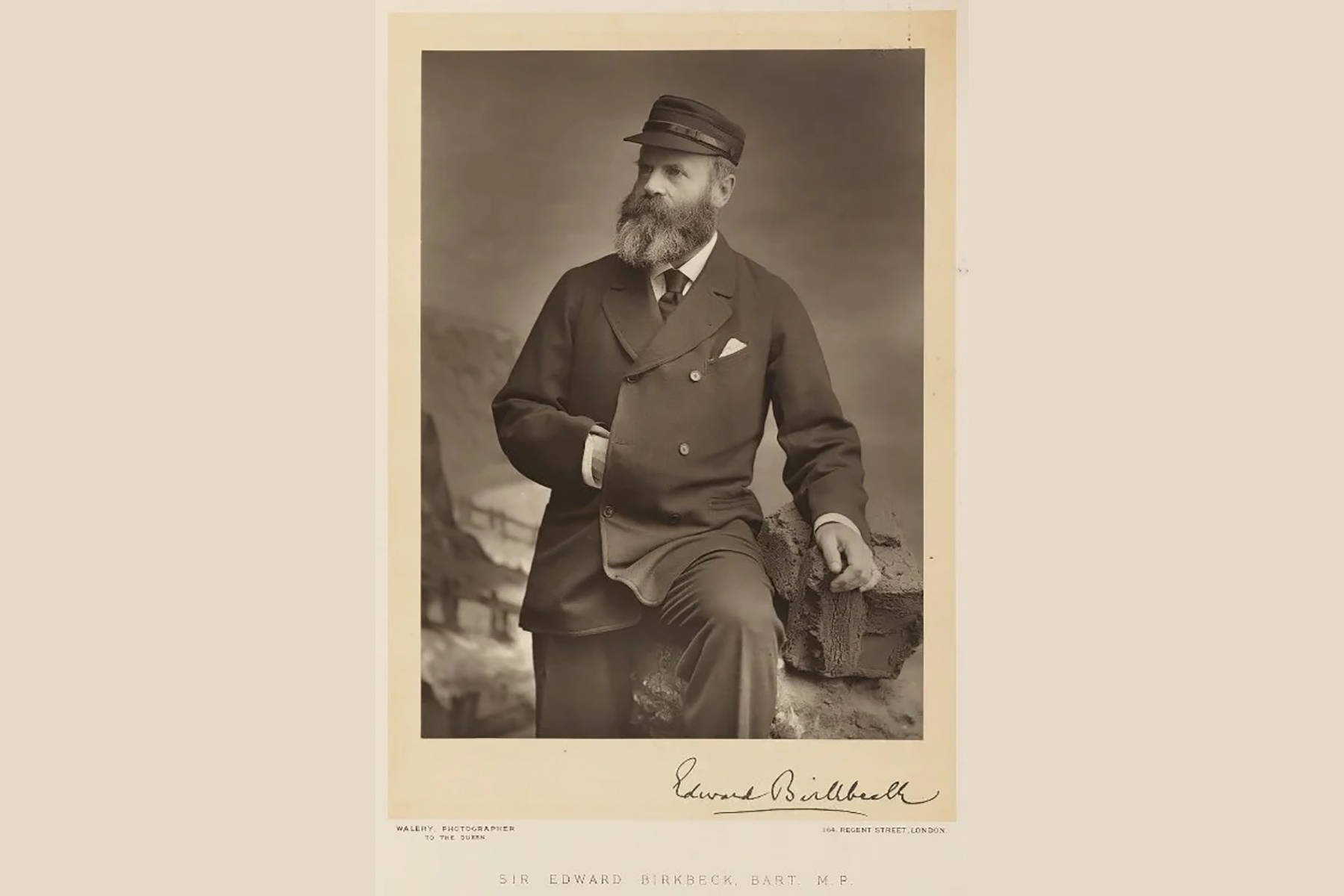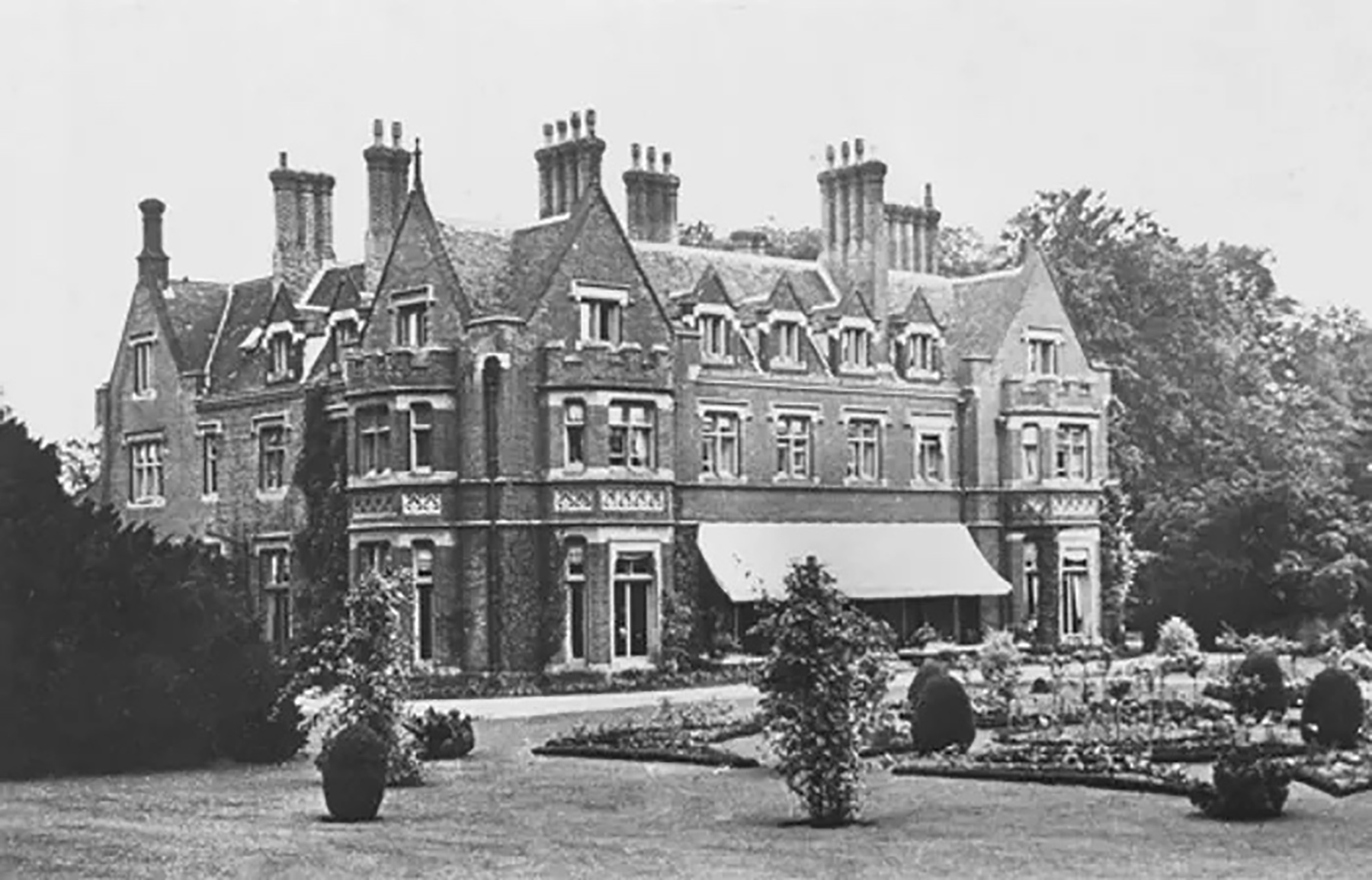WHAT AND WHO IS
EDWARD BIRKBECK?
The Edward Birkbeck was delivered to the Winterton RNLI Station as No. 1 Lifeboat on 2nd November 1896. She was withdrawn from service by the RNLI on 10th October 1924, following 44 launches and 94 lives rescued. The No. 2 Lifeboat Eleanor Brown was also withdrawn from service on 12 November 1924 and sent to Lowestoft where she went into storage. A replacement lifeboat was sent to Winterton - the Reserve No. 9, formerly "Charles Deere James" built in 1903 for the St Agnes Lifeboat Station. This was a 38ft x 10ft 10-oared Liverpool Class non self-righter which the Winterton men were not familiar with, refusing to operate it saying she was totally unsuitable for work on the outlying sandbanks. Following a meeting of the Committee of Management on 18th December 1924 the RNLI closed the Lifeboat Station at Winterton on 5th January 1925. A sad ending to what had been a fine Lifeboat Station with more than 100 years of outstanding service and nearly 500 lives having been saved by generations of gallant Winterton Lifeboatmen.
Find out more about Winterton's maritime heritage and how it led to the development of the Lifeboat Service by clicking on The Story . You can now also visit our page telling the story of the Service History of the Edward Birkbeck
Here’s the “technical bit” information provided by the RNLI from limited surviving records
She’s a 34 feet long by 10 feet beam improved Norfolk & Suffolk Pulling & Sailing or Surf Lifeboat with 3 feet keel, 17 feet bilge keels, 3 feet thwarts and with an overall weight of 4 tons. She was built by Beeching Brothers of Southgates Road, Great Yarmouth at a cost of £432 2s 4d paid for by a donor who wished to remain anonymous. She was named after a former Chairman of the RNLI and was sent to Winterton Lifeboat Station on 2nd November 1896. She was launched 44 times during her service, saving 94 lives, leaving service on 10th October 1924. The Lifeboat Station at Winterton was closed by the RNLI on 5th January 1925
We’d also like to thank The National Maritime Museum in Greenwich who allowed one of our Volunteers to visit and with their help to spend hours searching their archives leading to the discovery of Class Plans, which although not specific to the Edward Birkbeck in particular, are going to prove very useful in the restoration work.
THE FOLLOWING INFORMATION HAS BEEN DISCOVERED FOLLOWING MANY HOURS OF RESEARCH BY THE GROUP FROM VARIOUS SOURCES.
WE CANNOT, THEREFORE, GUARANTEE IT TO BE TOTALLY ACCURATE.
IF YOU ARE ABLE TO PROVIDE ANY FURTHER INFORMATION
PLEASE GET IN TOUCH AND LET US KNOW.
Firstly, it is important to realise that there were actually 2 Lifeboats named Edward Birkbeck that served at Winterton, which obviously leads to some confusion. The Surf Lifeboat originally named Anna Maria was renamed Edward Birkbeck around 1879, then replaced in 1896 by a new boat with the same name which is the one that we are now restoring.
The design of the Edward Birkbeck arose following a competition in 1850 by the Duke of Northumberland, Chairman of the Royal National Institution for the Preservation of Life from Shipwreck (now the RNLI). Many lives were being lost amongst Lifeboat crews so 100 guineas was offered as a prize for a new, safer boat design. 280 designs were submitted and the prize was awarded to James Beeching of Great Yarmouth. A few slight modifications to his design were made by James Peake, one of the Judges who was a Master Shipwright at Woolwich Dockyard, and this became the standard model for the new fleet of lifeboats. James Beeching died on 7 June 1858, aged 70. Beeching Brothers was founded in 1795 and continued to build ships in Great Yarmouth after his death, eventually including steam-powered vessels. The boatyard operated until 1919 and the Edward Birkbeck was built by James’s sons as part of an order for 12 boats in total and was given the number B397. This was recorded on a brass plaque which was apparently still in the boat until around 1990 but unfortunately could not be found when we obtained it. We do have a photograph, however, and it is planned to get a replica made.
Find out more about the life and work of James Beeching here
Each Lifeboat design along the Norfolk coast would have been slightly different as each crew knew their own waters well and knew what they wanted from their lifeboat. The Edward Birkbeck was double-ended with watertight compartments fore and aft and looped ropes suspended from gunwales protected by cork rubbing strakes. To withstand the anticipated strain on the hull in the notoriously dangerous coast off Winterton, she was constructed of 1½ inch thick Honduras Mahogany on rock elm frames at 7¾ inch spacings. The bottom of the boat was underlined with oak and interlined between the frames with 4 inch thick oak. She had a draught of 3ft 6in and was fitted with 2 centreplates; one forward and one aft with a respectable area of canvas. What was different about the Edward Birkbeck for the time was the inclusion of two iron drop keels and there were “clack valves” through the bottom of the boat to take on 2 tons of sea water to ballast to give the boat the extra weight it needed after launching and these could be shut and the ballast pumped out to keep down the weight when she had to be manhandled from the Boathouse in the sand dunes from a beach cart pulled by men and horses,. In a good wind on the return trip this would often be done with the vessel driving straight up the beach at speed.
The Edward Birkbeck had a crew of 12 men and a Coxswain. It is important to remember that these were local village men, putting to sea (with help from most of the village to launch the Lifeboat) often in perilous conditions, risking their own lives. Most could not swim and if lost overboard their only chance of rescue was probably being able to reach the “grab line” over the side of the hull at each man’s station. Of course, they did not have the modern high-tech lifesaving clothing worn by modern RNLI crew and wore a “gansey” handknitted by wives or girlfriends, each with a unique design and over that a “waistcoat” with corks stitched on. Sadly, sometimes the Gansey design was the only way that bodies could be identified in the event of a disaster.
We know that the Edward Birkbeck was launched 44 times and saved 94 lives and memorial plaques of Winterton’s lifeboats can be seen in Fisherman’s Corner in the Parish Church, recording the names of the vessels they were sent out to help and the number of people rescued. We continue to research information about her story, her crews and her rescues and will add this information to the website as it is completed.
We have been able to track down some details of her ownership after she left service and you can see information here
